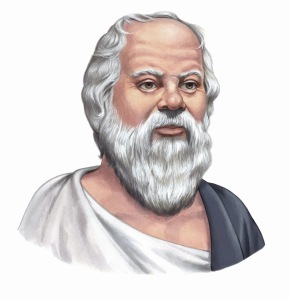The Unseen ROI: The Inestimable Value of Philosophy
Ditch the suits, swap coffee for Socrates, and invite Plato to your next board meeting. Sounds absurd? Bear with me. Philosophy isn’t just an ivory tower subject; it’s a tool that’s as practical as your financial model, albeit much older and perhaps wiser. In the ecosystem of business, organisations, and software development, philosophy provides a foundational map for manoeuvring intricate landscapes. Let’s explore its inestimable value in these domains.
Understanding the Intricacies of Systems
Forget a one-size-fits-all approach. Businesses and organisations are intricate networks where one change can trigger a domino effect. Philosophy—through disciplines like systems theory, and phenomenology—helps you understand the underlying mechanics of these complexities. We’re not talking abstract theory; we’re discussing actionable insights that can guide your operational strategies to tackle core issues rather than symptoms.
Building an Ethical Framework
It’s easy to dismiss ethics as an ivory tower luxury until you’re facing a PR nightmare and your bottom line is plummeting. Philosophy provides a nuanced understanding of ethics that extends beyond conventional notions of right and wrong. Whether it’s utilitarianism or virtue ethics, these philosophical constructs can help businesses create comprehensive ethical frameworks, aiding in decisions that balance profitability and moral integrity.
How Do You Know What You Know? Software and Epistemology
In software development, success hinges on solving the right problems. How can you be sure you’re on the right track? This is essentially an epistemological issue, exploring the nature of knowledge itself. Philosophy equips software developers with the tools to surface and reflect on assumptions and question established norms, leading to more impactful and relevant solutions.
Employing the Socratic Method as a Debugging Tool
Don’t just accept things at face value. The Socratic Method is an intellectual protocol for identifying contradictions and refining thought processes. Whether you’re brainstorming a new product or debugging a software glitch, applying Socratic questioning can unveil insights that might otherwise be overlooked.
Nurturing a Culture of Innovation
Innovation doesn’t arise from rote learning or mimicking competitors. Philosophy teaches us to challenge prevailing wisdom, providing the fertile ground from which genuine innovation sprouts. Think of trailblazers like Albert Einstein or Marie Curie; their philosophical approach to questioning the norm led to paradigm-shifting discoveries. In business, this critical mindset could be your key to outpacing the competition.
The Benefits
Here’s a concise list of the benefits of incorporating philosophy into business practices:
- Improved Decision-Making: Philosophical frameworks offer robust methods for evaluating complex situations, thereby aiding in more informed and strategic decision-making.
- Ethical Clarity: Philosophical theories can help develop a nuanced ethical stance, allowing businesses to make choices that are morally sound and legally safe.
- Critical Thinking: Philosophy trains the mind to evaluate assumptions, question norms, and consider alternative viewpoints, all critical for innovation and problem-solving, not to mention culture change.
- Understanding Complexity: Through disciplines like systems thinking, philosophy helps us grasp the interconnectedness and complexity of business ecosystems.
- Enhanced Communication: Philosophy helps refine one’s ability to articulate complex ideas clearly, an invaluable skill in negotiations, conflict resolution and fellowship.
- Long-Term Focus: Philosophical principles can guide strategic thinking, encouraging a longer-term focus over short-term gains, which is often crucial for sustainability.
- Conflict Resolution: Philosophical approaches like dialectics can offer innovative solutions to mediate conflict and find middle ground in business disputes.
- Enhanced Creativity: Philosophy encourages out-of-the-box thinking and questioning of the status quo, conditions conducive for creativity, innovation and culture change.
- Employee Wellbeing: Philosophical concepts like existentialism or humanism can offer frameworks for fostering a work environment that respects individual agency and promotes wellbeing.
- Risk Management: Philosophical disciplines such as logic and reasoning provide tools for better understanding and managing risks in various business operations.
- Transparency and Trust: Philosophical dialogue encourages openness and thoughtful discussion, creating a culture of transparency that can improve stakeholder trust.
- Global Perspective: Philosophy, being a cross-cultural discipline, can help businesses better understand and adapt to cultural nuances in global markets.
- Technological Ethics: As technology advances, questions around ethical use and societal impact become crucial. Philosophy can provide frameworks for navigating these challenges.
- Sustainable Practices: Philosophical debates around ecology and sustainability can help businesses align their practices with wider societal goals.
- Leadership Development: Philosophical tenets can guide leadership style, fostering a more empathetic and effective management approach.
By adopting some philosophical methods and principles, businesses can enrich their operational toolkit, adding depth, rigor, and ethics to their strategies and practices.
Summary
While you may not replace your business seminars with philosophy classes, ignoring the subject is a missed opportunity. Its insights into systems, ethics, and problem-solving are not just theoretical mumbo-jumbo; they’re practical tools with the potential to significantly bolster decision-making, ethical conduct, and innovation. Now that’s a kind of ROI that would even make Socrates smile.







